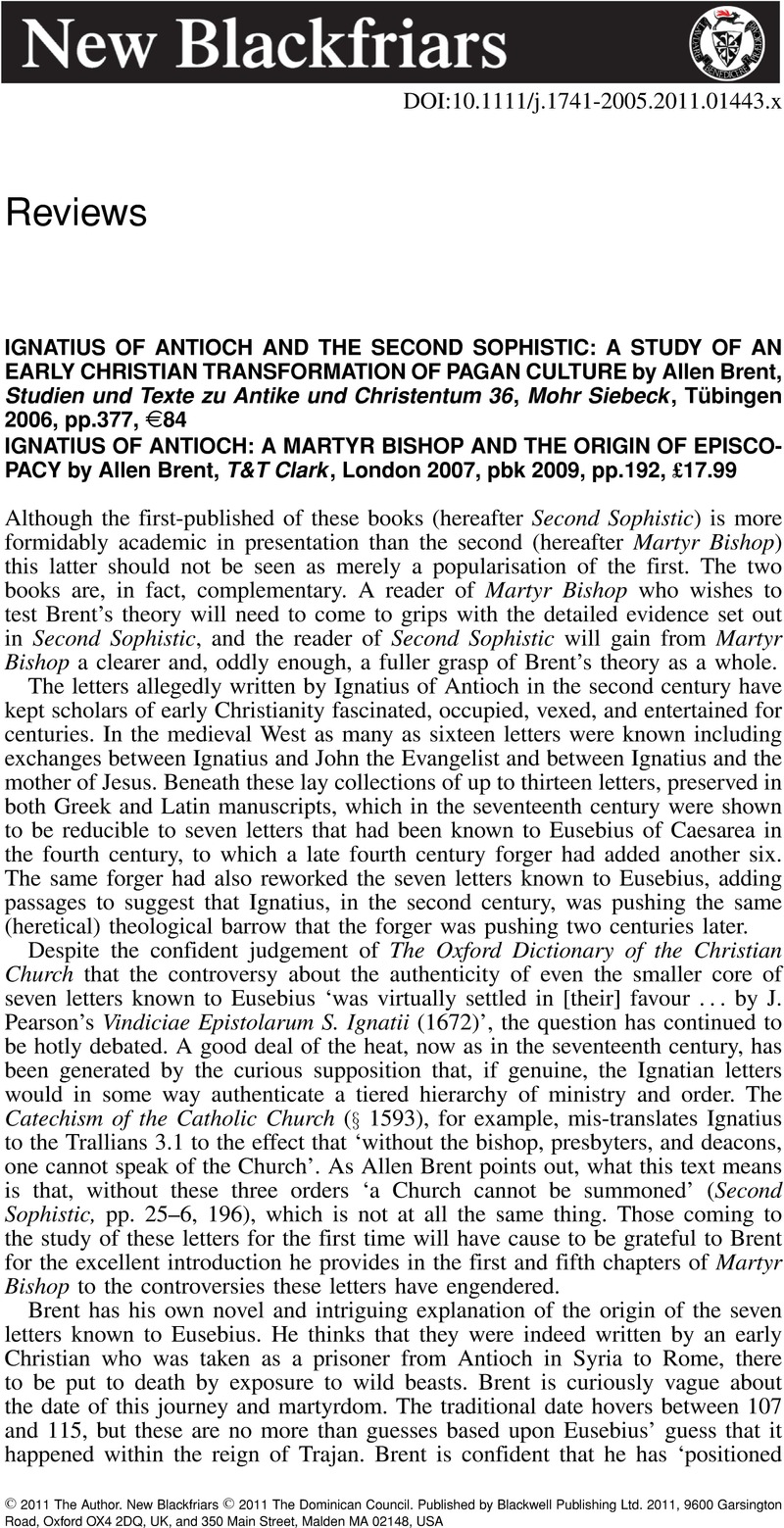No CrossRef data available.
Article contents
Ignatius of Antioch and the Second Sophistic: A Study of an Early Christian Transformation of Pagan Culture by Allen Brent, Studien und Texte zu Antike und Christentum 36, Mohr Siebeck, Tübingen 2006, pp. 377, €84 - Ignatius of Antioch: A Martyr Bishop and the Origin of Episcopacy by Allen Brent, T&T Clark, London 2007, pbk 2009, pp. 192, £17.99
Review products
Ignatius of Antioch and the Second Sophistic: A Study of an Early Christian Transformation of Pagan Culture by Allen Brent, Studien und Texte zu Antike und Christentum 36, Mohr Siebeck, Tübingen 2006, pp. 377, €84
Ignatius of Antioch: A Martyr Bishop and the Origin of Episcopacy by Allen Brent, T&T Clark, London 2007, pbk 2009, pp. 192, £17.99
Published online by Cambridge University Press: 01 January 2024
Abstract
An abstract is not available for this content so a preview has been provided. Please use the Get access link above for information on how to access this content.

Information
- Type
- Reviews
- Information
- Copyright
- Copyright © 2011 The Author. New Blackfriars © 2011 The Dominican Council. Published by Blackwell Publishing Ltd. 2011, 9600 Garsington Road, Oxford OX4 2DQ, UK, and 350 Main Street, Malden MA 02148, USA

